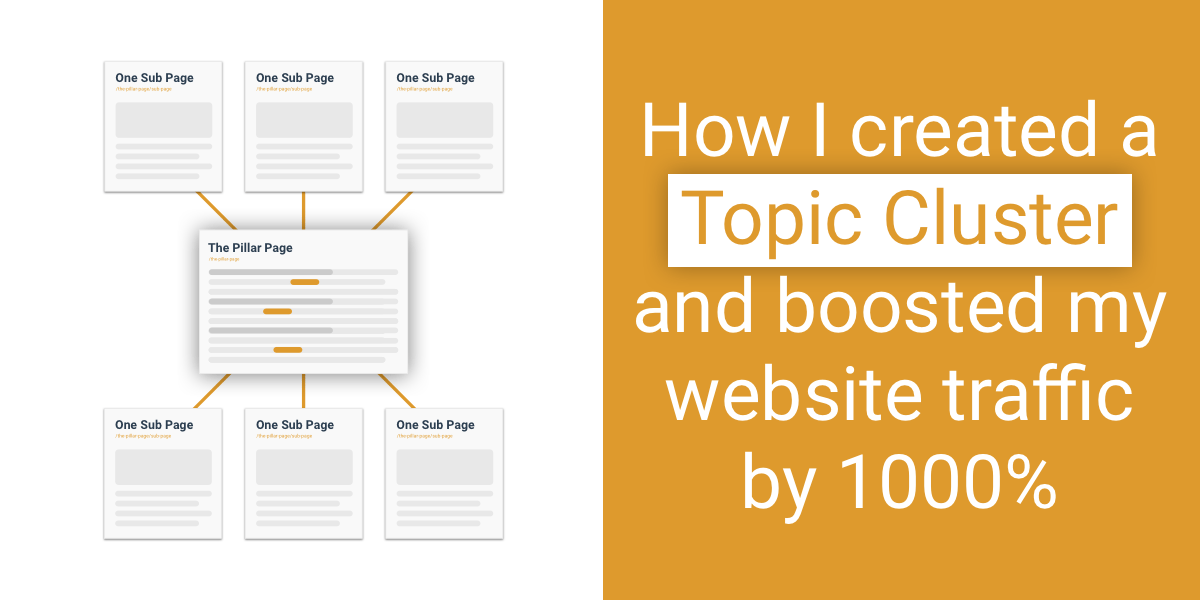
Google’s search landscape has shifted dramatically in the last two years. Many website owners who thought they were doing everything “right” are suddenly seeing their rankings plummet. It’s not just the spammy sites anymore even high-quality blogs, niche sites, and authority publications are being affected.
A major culprit? Forced topical clusters combined with a wave of algorithmic changes. Let’s break down what’s happening, why it matters, and what you can do to protect your site in 2025.
Content Saturation & AI Overuse
The web is drowning in content. With generative AI tools, millions of posts are published every day most of them shallow, repetitive, and undifferentiated.
Google has noticed. If a topic has been covered 10,000 times with near-identical phrasing, Google’s systems look for signals of originality, expertise, and actual usefulness. Sites that rely too heavily on AI churn without adding real insights often get pushed down, no matter how “optimized” the articles look.
The bottom line: Google doesn’t need 500 more AI-written posts about “best credit cards.” It needs new data, real experiences, and value users can’t get elsewhere.
User Signals & Engagement Metrics
Google doesn’t rely only on keywords anymore. It tracks how users interact with your pages:
- CTR (Click-Through Rate): Do people actually click your snippet in search?
- Dwell Time: How long do they stay before bouncing back?
- Bounce Rate: Do they leave instantly because your content didn’t help?
- Interactions: Do they scroll, click, comment, or share?
Poor engagement signals tell Google that your site might not deserve a top spot. Even “perfectly optimized” content can lose rankings if users aren’t finding it useful or engaging.
Over-Optimization Triggers
Ironically, trying too hard to please Google can backfire.
- Keyword stuffing makes content look robotic.
- Unnatural internal linking (forcing links just to push authority) can look manipulative.
- Forced topical clusters creating dozens of surface-level articles around the same theme no longer work. Google sees through it and may demote the entire cluster.
Instead of publishing every possible variation of a keyword, you need to go deeper into real subtopics, case studies, and user-driven questions.
AI-Driven SERPs & Zero-Click Searches
Even if you rank, you might not get traffic. Google’s AI Overviews, featured snippets, knowledge panels, and rich results are taking up more SERP space than ever.
In many niches, especially informational ones, users get their answer without clicking any site. That means impressions may remain stable while clicks drop.
Surviving this trend requires two things:
- Targeting queries that demand deeper exploration, not just quick answers.
- Building authority and visibility outside of Google’s search box.
YMYL (Your Money, Your Life) Strictness
For sensitive niches finance, health, legal, and safety Google applies stricter standards. This is part of the E-E-A-T framework (Experience, Expertise, Authoritativeness, Trustworthiness).
If your site touches YMYL topics, you’ll need:
- Verified credentials (degrees, certifications, professional bios).
- Clear authorship tied to real experts.
- Transparent citations and trustworthy references.
No matter how polished your content is, if it lacks credibility signals, it won’t rank in YMYL spaces.
Site Reputation & Link Quality
Backlinks still matter but not in the old sense. Spammy link-building, PBNs, and bulk guest posts are risky.
Google looks at:
- Brand mentions in trusted media.
- PR signals like expert quotes or press coverage.
- Natural backlinks from reputable sites.
In other words, reputation and trust are now as important as raw link numbers.
What Else You Need to Do to Rank in 2025
Google isn’t just penalizing bad practices. It’s rewarding sites that go beyond the basics. Here are practical strategies to future-proof your SEO:
Prioritize Real-World Experience
Add unique value with:
- Case studies from your own business.
- Experiments and data you’ve collected.
- Original visuals, charts, and screenshots.
Strengthen Author Bios & Brand Authority
- Create detailed author bios with real credentials.
- Link to LinkedIn profiles, publications, or media appearances.
- Invest in PR to build brand authority beyond your site.
Prune or Noindex Weak Content
Audit your site regularly. If a page doesn’t drive traffic or engagement, prune it or mark it noindex. This prevents it from dragging down the whole domain.
Improve UX Metrics
Speed, design, and interactivity matter. A slow, clunky site kills dwell time and engagement. Aim for:
- Fast load times (under 2 seconds).
- Mobile-first design.
- Interactive elements like FAQs, calculators, or tools.
Diversify Traffic Sources
Don’t rely only on Google. Grow through:
- Social platforms (TikTok, LinkedIn, Twitter/X).
- Email newsletters with loyal subscribers.
- YouTube or podcast channels.
Go Deeper Into Subtopics
Instead of thin keyword clusters, create comprehensive resources. Cover fewer topics but in greater depth, with unique insights and supporting research.
Build Community & Engagement
Encourage interaction through:
- Comment sections.
- Product reviews.
- Forums or community boards.
Community signals not only improve engagement but also build resilience against search volatility.
Old SEO Practices vs. 2025 SEO Survival Tactics
| Old SEO Practices | Why They Fail Now | 2025 Survival Tactics |
| Pumping out keyword clusters | Creates thin, repetitive content | Go deeper into subtopics with original insights |
| Relying on AI-only articles | Google pushes down generic content | Add real-world experience, data, and case studies |
| Keyword stuffing & forced links | Triggers over-optimization penalties | Natural internal linking, user-focused flow |
| Mass guest posting & PBNs | Seen as spammy, low trust | Earn brand mentions, digital PR, and trusted backlinks |
| Ignoring author credibility | Weakens E-E-A-T signals | Strong bios with credentials, LinkedIn, and publications |
| Relying only on Google traffic | Vulnerable to SERP shifts | Diversify with social, email, YouTube, and communities |
| Publishing everything | Weak content drags domain | Prune/noindex low-value content |
| Static UX | High bounce and low dwell time | Fast, mobile-first, interactive design |
Frequently Asked Questions (FAQs)
Why is my site losing rankings even though I publish regularly?
Publishing often doesn’t guarantee growth anymore. If content is shallow, repetitive, or AI-heavy, Google may see it as unhelpful and demote your entire site.
What are forced topical clusters, and why do they hurt SEO?
Forced topical clusters are when a site publishes dozens of surface-level articles around the same keyword theme. Google now views this as over-optimization, preferring fewer but deeper resources.
How can I recover from the Helpful Content Update?
Start by auditing your content. Prune or noindex weak articles, improve engagement signals, and strengthen author authority with credentials and real-world expertise.
Is AI content completely banned by Google?
No. AI-assisted content is fine if it provides genuine value. But pure AI filler without unique insights, data, or expertise will likely struggle to rank.
What’s the best long-term SEO strategy for 2025?
Focus on experience-driven content, strong brand authority, excellent UX, and traffic diversification. Google rewards sites that go beyond keywords to offer real, trustworthy value.
Final Thoughts
The SEO game in 2025 is no longer about publishing more it’s about publishing better. Forced topical clusters, AI-driven filler, and over-optimization tricks are dragging even “good” sites down.
The way forward is clear: show real experience, prove your authority, improve user experience, and build a brand that people trust.
Google’s algorithms will continue to evolve, but if you focus on creating value that humans care about, your rankings will survive and thrive in the years ahead.





